How This European City Became the Ultimate Destination for Cocktail Lovers
Everything you need to know about Amsterdam’s cocktail scene — and the historic, family-owned distillery that helped put it on the gin- and vodka-soaked map.
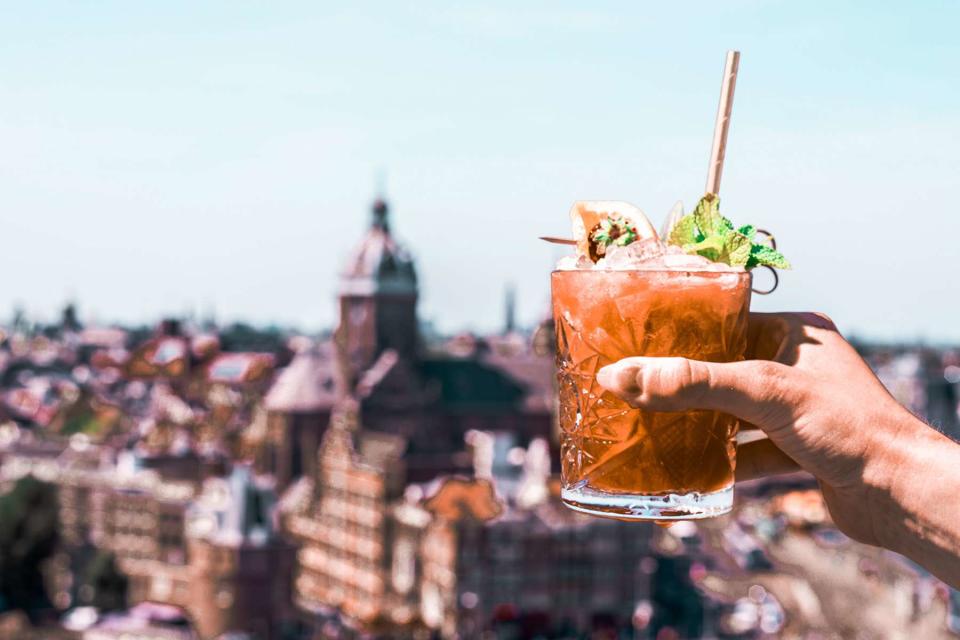
Stefano Polignano/Getty Images
The dark, austere lobby of the Pulitzer in Amsterdam’s Nine Streets district is, at first, as cold as a canal cruise on a rainy fall afternoon. The hotel, a Peter Pulitzer project that began in 1960, is a cluster of 25 aristocratic and well-to-do merchants’ homes from the 17th and 18th centuries, modernized and combined in a maze of hallways, stairs, and raw natural textures accented by polished, rich design elements. It’s the pops of gem tones and friendly front desk staff that enliven the ingress, and just past the wall of teal curtains concealing a gilded elevator bank, a white marble bar awaits in a glass-walled enclosure beside the courtyard. Pulitzer’s Garden Bar is my initiation into Amsterdam’s post-COVID-19 cocktail scene, where gin and vodka reign supreme, as has long been the case thanks to the Dutch’s fondness for distilling clear booze. And that’s exactly what I’m here to drink.
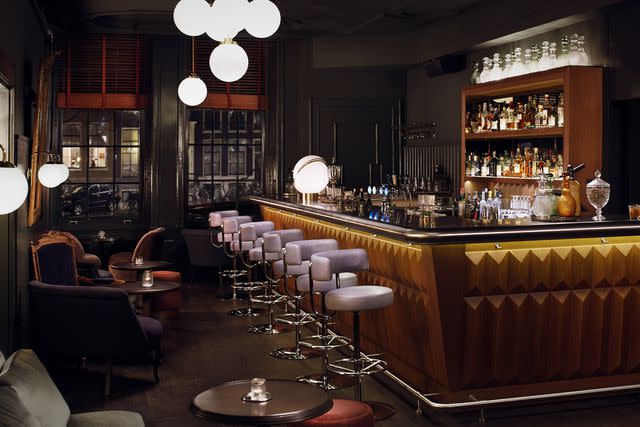
Sander Baks/Courtesy of Pulitzer Amsterdam
I begin my afternoon with a martini — wet, stirred, twist — sipping as I soak up my surroundings. The gin, Nolet’s, is produced less than an hour away in Schiedam, home to the National Jenever Museum and an illustrious history of distillation dating back (at least) to the late 1600s. By the 19th century, Schiedam had entered its Golden Age with almost 400 working distilleries, only a few of which would survive ensuing wars and other economic factors that would lead countless mills and distilleries to shutter by the early 1900s. Today, the Nolets are among the rare multi-generational families who have ushered their craft (along with their original windmill from 1691) into the present.
Gin’s popularity in Holland and around the world comes as no surprise given the category’s predecessor, genever, which was the spirit that defined Schiedam’s contribution to the Netherlands and the rest of the world back in the city’s distilling heyday. Genever, which can be described as a “maltier gin” at its simplest, is the product of distilling malt wine that’s then flavored with juniper berries and other botanicals — over time, the element of malt fell out of fashion as distillers in England and elsewhere began favoring neutral-grain spirit, a less costly option, as the medium for botanical infusion. But even by then, Schiedam had already made its mark on global drinking, and its name would long serve as genever’s synonym even as the malt-forward style became all but obsolete.
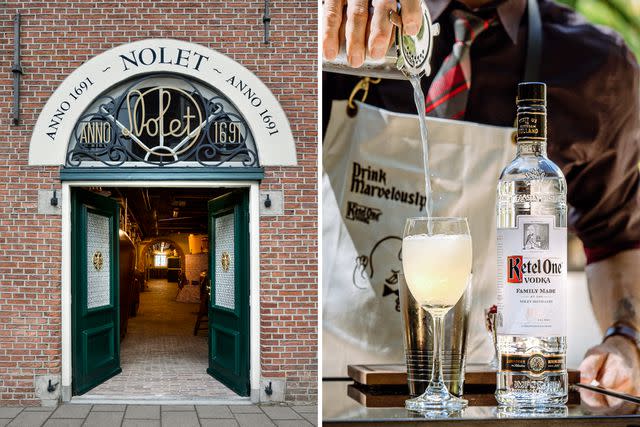
From left: Courtesy of Ketel One; Kirby Gladstein/Courtesy of Ketel One
So, while the English tend to get all the credit for gin’s popularity (and existence as a whole), it’s the Dutch we can thank for the spirit’s blueprint. And we can directly trace Amsterdam’s cocktail scene to the survival and endurance of distilling families like the Nolets, whose 11th generation is currently at the helm of the business. I spoke with current master distiller Bob Nolet on how Schiedam’s distillers have influenced those at the forefront of the country’s bar industry (namely Amsterdam’s top bartenders) when it comes to cocktail culture throughout history — and, as a result, how that’s trickled down to bars across the rest of the world.
“The bartending community here and abroad has always been a source of constant inspiration for our brand as a whole,” he tells me, noting that his father, Carolus Nolet Sr., had looked to bar staff across the country for their wisdom when developing the family’s now-widely-known vodka brand, Ketel One, which debuted in 1983. “Through those conversations, bartenders helped inform everything from the taste profile of Ketel One to the length of the bottle for optimal pouring — we wouldn’t be the brand we are today without their invaluable input.” Nolet’s Gin served as quite a launchpad for Ketel One, a vodka that reared its head with plenty of time to gain traction before New York City bartender Toby Cecchini perfected the cosmo in 1988, which took off like wildfire, perhaps cemented by Sex and the City’s premiere 10 years later. But, like genever, vodka’s popularity worldwide has ebbed and flowed.
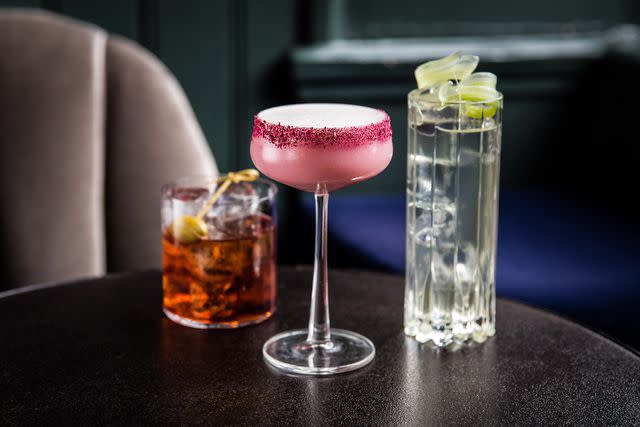
Ashkan Mortezapour/Dishtales BV/Courtesy of Pulitzer Amsterdam
Time continues to show us that certain spirits — vodka much more so than genever — are eternal. Perhaps the return of SATC earlier this year had something to do with the resurgence of the taste of its nascent decade and its most notorious drinks, which would explain why we suddenly see espresso martinis floating around bars once again, although Nolet maintains some suspicion that the Covid era had something to do with society’s rediscovery of vodka after its great post-Cosmo downfall in the early 2000s.
“I think that cocktail culture is cyclical,” Bob tells me. “More than a decade ago now, when the craft cocktail resurgence came about, cocktail culture favored complexity and the avant garde. We saw bartenders choosing dark spirits and experimenting with esoteric ingredients. Now, that trend has come full circle, and we’re seeing the home bartender become increasingly savvy, and embracing cocktails in a way that is playful and irreverent. He attributes the industry’s newfound appreciation for simplicity to the self-taught pandemic home bartender, which has brought us back to a period of nostalgia with a newfound appreciation for the “cheesy” drinks of the early aughts we’d been so quick to write off at the time. In a way, we could even draw parallels to vodka as a further simplification of gin as gin was to genever, with both instances likely representing collective trauma response to world crises such as wars and deadly diseases.
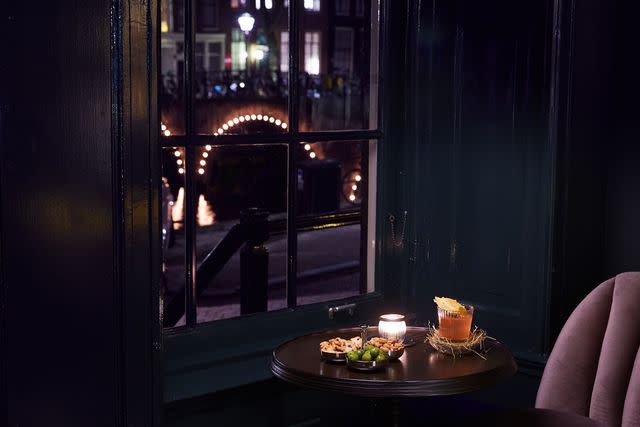
Sander Baks/Courtesy of Pulitzer Amsterdam
If we look at vodka symbolically (which nobody asked for but we’re doing it anyway), it’s the simplicity that gives the category its true appeal, which the Nolet family has harnessed in tailoring Ketel One to bartenders’ need for versatility. Vodka, Nolet adds, is a great canvas for the modern classics we celebrate today, from the cosmo to a good Bloody Mary and more. And mirroring our home-drinking trends in the wake of the pandemic, its presence is as strong as ever throughout bars and restaurants in Amsterdam and beyond.
For those who travel with a destination’s bar scene in mind, historical impact on today’s drink menus may or may not matter. But if you’re in Amsterdam to drink cocktails, it’s impossible to separate Schiedam from the drinking habits of the rest of the world. If you have time to visit Schiedam and its remaining historic distilleries (like Nolet’s), you’ll have your work cut out for you, but if not, Amsterdam’s long list of legendary cocktail bars will certainly keep you busy. Don’t miss the Blue Hawaiian at Flying Dutchman, the espresso or pornstar martini at Hotel TwentySeven, or the cherry highball (Ketel One, thyme cordial, and cherry soda) at Pulitzer Garden. Also inside the hotel is Pulitzer Bar, which is arguably one of the city’s most glamorous watering holes, along with sister spot Restaurant Jansz. Don’t miss Lotti’s at The Hoxton, Amsterdam or the vodka martini at Rosalia’s Menagerie, and make sure to put the following Amsterdam bars on your list as well: Door 74, Super Lyan, and OCCO Bar at The Dylan hotel.
For more Travel & Leisure news, make sure to sign up for our newsletter!
Read the original article on Travel & Leisure.

